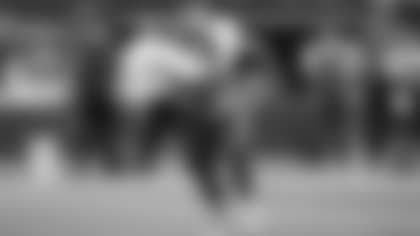This is a great year-long celebration of the 100th year of the National Football League, and along with it, the 60th anniversary of the Denver Broncos and the other original American Football League teams.
One of the things I like about this is that it gives pseudo historians like me a chance to look back at what we are and how we got to where we are.
A lot of fans look at the game and take for granted that it always looked this way, but it did not.
Any readers have great familiarity with the single-wing formation? Me neither.
But the T formation is what we know and recognize. In this formation, three backs line up behind the quarterback in a row, which looks a lot like a T. It has been the major offensive formation, and the only one — save for the shotgun, which is an offshoot of the T — that any of us has ever watched (except of course, for those fans who watched Colorado College from 1957 through 1989, when head coach Jerry Carle was the last coach of a single-wing team in the nation).
But when did it begin, and can I begin to tie this column to the Denver Broncos?
In 1940-1941, and yes.
The greatest and most influential player in the history of the Broncos is John Elway.
Elway went to Stanford University, and in football as in so many other aspects of American life, Stanford has been front and center, leading the way, in and out of the Silicon Valley.
So too was it with football, for back in 1941 when Clark Shaughnessy was the head coach at Stanford, he revised a formation that had originally been used as far back as the 1880s, then abandoned.
Shaughnessy makes some tweaks and modernized the old T, making it not just relevant but a revelation in the sport of college football.
Interestingly, Shaughnessy spent just as much time experimenting on defense, even though he is today regarded as "the father of the T formation" and literally the original founder of the forward pass as a major offensive weapon.
For as soon as he began to use the T, he started figuring out a way to defend his new formation.
His greatest head coaching success came in the 1940 season at Stanford, where he led the Indians (before they switched to the "Cardinal" nickname) to a Rose Bowl victory.
Such was the fame of Shaughnessy at Stanford, but it was matched by the greatness of George Halas, founder of the NFL and head coach of the Chicago Bears, that he recognized this from halfway across the country.
Halas actually had Shaughnessy help him prepare his Bears for the 1940 NFL Championship Game, which was the most one-sided title game in NFL history.
In a record that likely will never be broken, the Bears routed the Washington Redskins for a 73-0 margin.
Shaughnessy's T formation, and the willingness of Halas to be open-minded and forward-thinking in this regard, encouraged the widespread adoption of the "new" formation.
It certainly helped that the Bears were coached by the first great T-formation quarterback, Sid Luckman, without any question one of the greatest quarterbacks in NFL history, even today.
Luckman was a great college player at Columbia and was the second player chosen in the NFL draft in 1939, but such was the state of pro football then that he made plans to join a trucking company as a young executive, correctly figuring he would make just as much money doing that as in pro football, with more stability.
Halas actually made a personal trip to New York to meet with Luckman in his apartment and plead his case for the former Columbia star to join the Bears.
Whatever "Papa Bear" said must have worked, because Luckman decided to give pro football a chance.
All he did was win four NFL titles (1940, 1941, 1943, 1946) and popularize the T formation as virtually the only one in use in pro football.
Clearly, winning back-to-back championships set a permanent tone for all others to follow.
Luckman had numerous honors and set some records that still stand today, ultimately being named to the NFL 1940s All-Decade team and earning a spot in the Pro Football Hall of Fame (Class of 1965).
Without any question, Luckman, Sammy Baugh of the Redskins, and later, Otto Graham of the Cleveland Browns, were the three greatest quarterbacks and passers until the era of Johnny Unitas in the late 1950s.
These names are vital parts of NFL history, along with Shaughnessy, who as noted above was a college coach when he made his greatest contribution to offensive play in the NFL.
Whenever fans think of "The Drive" or virtually any other moment of John Elway's or anyone else's career from 1942 till now, we are watching the T formation or one of its variations.
When we watch Joe Flacco command the Broncos offense at training camp or studying the development of Drew Lock, we are watching the T.
The names mentioned in this column are among the people who are the football equivalent of those who showed us how to walk, then run.
They fathered the passing game that so defines pro football today.
The 100th season of the National Football League is bound to be a great one, but when we consider the individuals who have made this a sport we love to watch, let us remember the names Clark Shaughnessy and Sid Luckman.















